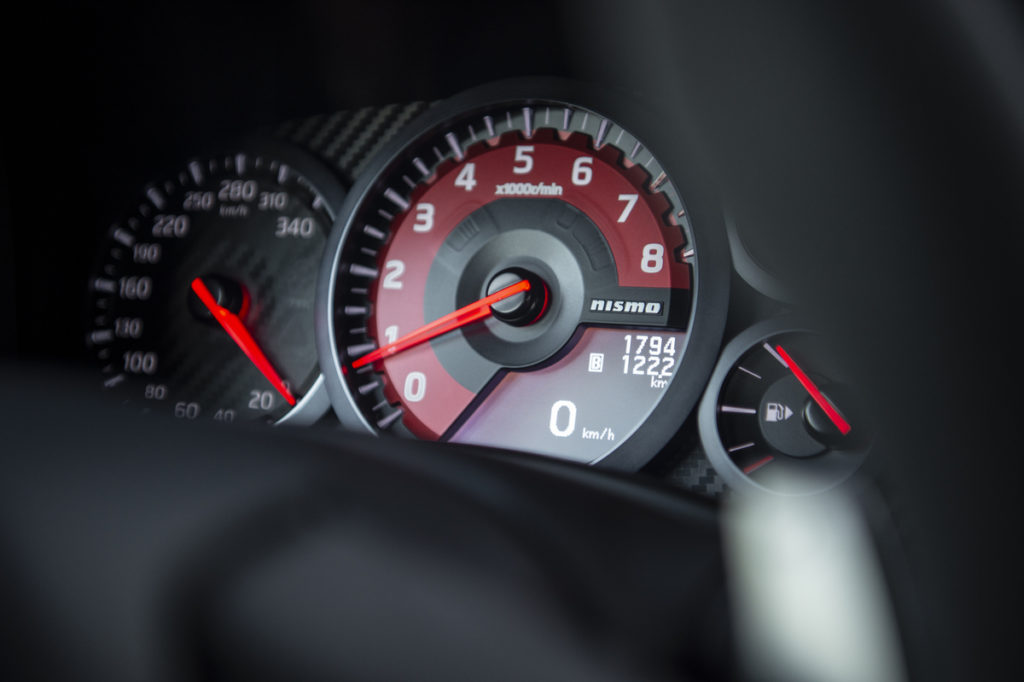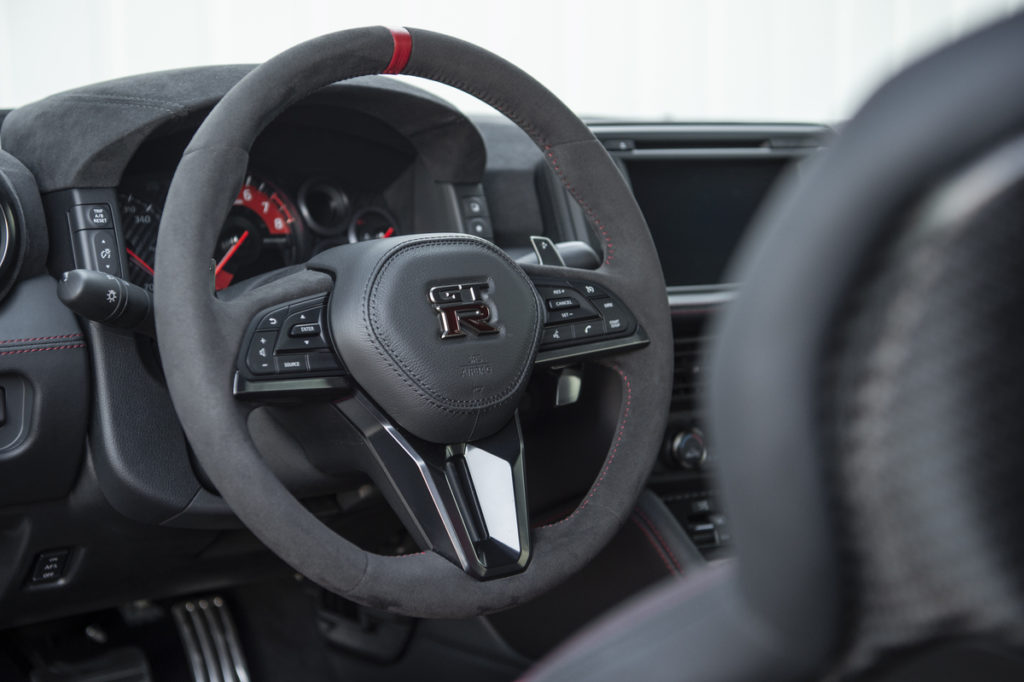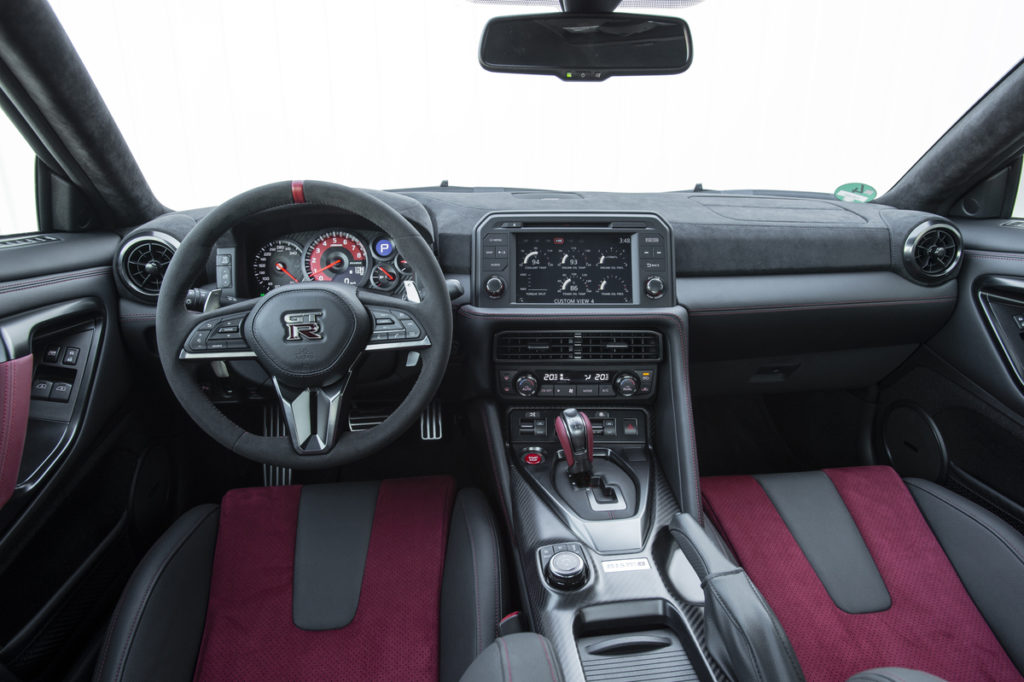
– Nissan reaffirms why NISMO + GT-R = exhilarating performance –
Designed for a pro, built for everyone.
The 2020 Nissan GT-R NISMO is the culmination of two of Nissan’s most important nameplates: GT-R and NISMO.
The GT-R nameplate represents 50years of history, pedigree, success in racing and a global fan following. NISMO, its name derived from Nissan Motorsports International Co., is known worldwide as Nissan’s in-house tuning arm that pursues performance at a maniacal level by perfecting the smallest of details. True to its proud heritage, the GT-R NISMO is a more extreme, track-oriented version of the GT-R that has matured through rigorous refinements – becoming sharper and more rewarding as a streetcar.
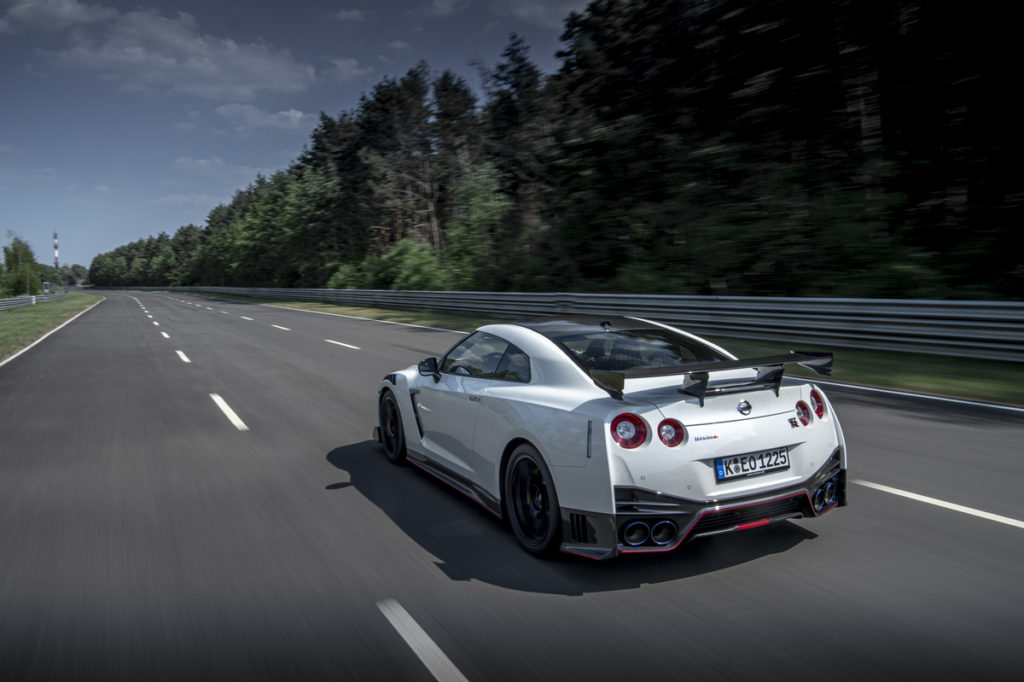
For 2020, the GT-R NISMO is about total balance. New race-proven turbochargers, improved gearbox shift control, lighter components, reduced overall mass and upgrades to the brakes, wheels and tires contribute to a 2.5-second reduction in lap time around Nissan’s development track. There’s also an improvement of the GT-R’s inherent high-speed stability, even at speeds of up to 186 mph. Here is how Nissan achieved this remarkable improvement.
Building on the kaizen mindset The pursuit of perfection requires persistence. The constant need to evolve and fine-tune – this is kaizen.
Kaizen is at the heart of the 2020 GT-R NISMO, a team-wide mindset that has pushed the men and women behind this car to challenge themselves each step of the way.They show an inherent curiosity and “what if” mentality when revisiting every minute detail. Small improvements may not seem important in isolation, but it’s when they’re combined as a whole that a difference becomes perceptible. That’s when a car’s character grows; it’s not all about numbers and performance but the holistic effect – how the GT-R NISMO becomes an extension of a driver’s body and mind as the vehicle carves a line through a favourite road or race track.
Lead by Tamura, executed by the team
Chief Product Specialist Hiroshi Tamura – known as “Mr. GT-R” – has been at Nissan for more than 30 years. Dedicated to evolving and improving the GT-R, he has been part of almost every step of the model’s evolution, cutting his teeth as a chassis engineer and part of the team that created the BNR32 Skyline GT-R in 1989.Tamura’s love for Nissan’s most legendary sports car was sparked early. At age 10, he witnessed Takahashi Kunimitsu take his blue-and-white 2000 Skyline GT-R racecar to an epic finish at a very wet Fuji Speedway, beating strong rivals like Mazda and its RX3. Tamura knew from that moment that he wanted to not just watch the GT-R but also be part of its success. Today, Tamura ensures the GT-R continues to evolve year in and year out, staying atop a growing field of competitors, including the most expensive crop of supercars – and, in some cases, hypercars.
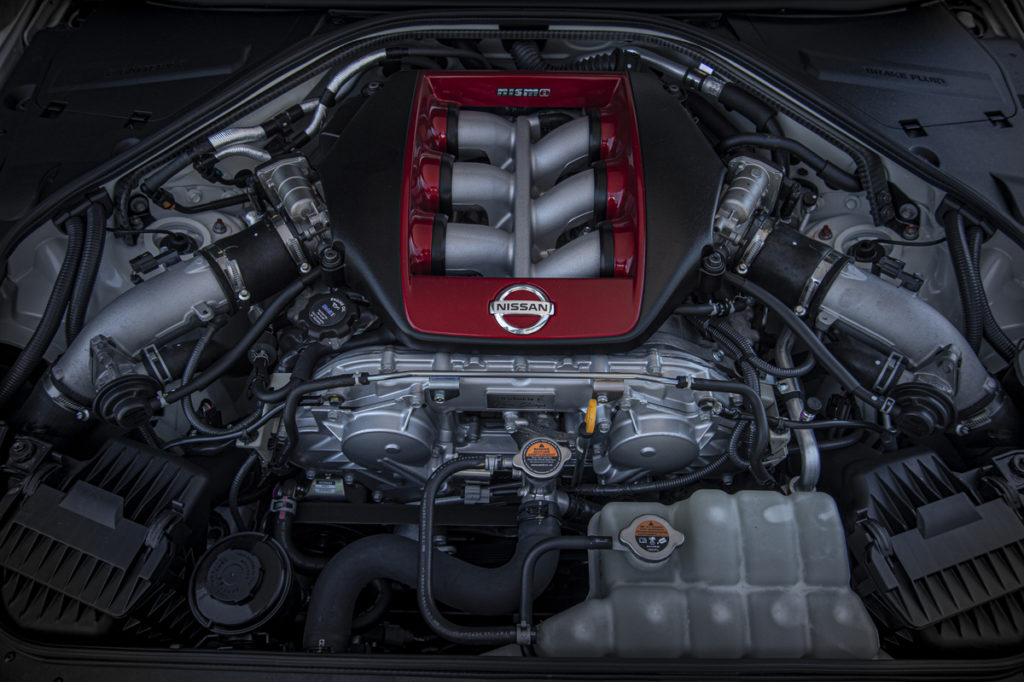
GT3 turbos for the 600-horsepower VR38DETT V6
Racing improves the breed and that is very much the case with the 2020 GT-R NISMO and its legendary 3.8-liter V6 VR38DETT engine. As with all GT-R models, each GT-R NISMO engine is hand-assembled from beginning to end in a special clean room by meticulously 1 trained technician, with an aluminum plate added to the front of each engine showing the name of the individual Takumi engine craftsman. For 2020, the hand-assembled engines feature a long menu of enhancements, starting with the twin-turbocharger heart. The 2020 GT-R’s new turbochargers are the same ones currently used on the GT3 race car version of the GT-R. They employ a 10-vane turbine wheel (one fewer vane than the 2019 model) and the vanes are 0.3 millimetres thinner. This accounts for a 14.5% reduction in mass,and therefore inertia by 24%, allowing for faster response. To counteract having one less vane, which would normally reduce flow rate, a new backplate was created to prevent exhaust gases from flowing behind the turbine blades, drastically improving flow efficiency.
Through the latest fluid and stress analysis, special attention was given to the actual design and profile of the vanes. Their new shape optimizes efficiency with exhaust gases to boost flow rate resulting in improved boost response and acceleration as well as in gear “pickup” in any situation. For example, when accelerating from 68 mph and 4,000 rpm in fourth gear (manual mode), the response is immediate and instantly felt – showing an engine response improvement of 20% (versus the previous GT-R NISMO) as the driver increases throttle pressure, from 0% opening to wide open throttle. The result is a sharper feeling that further enhances the overall character of the engine.
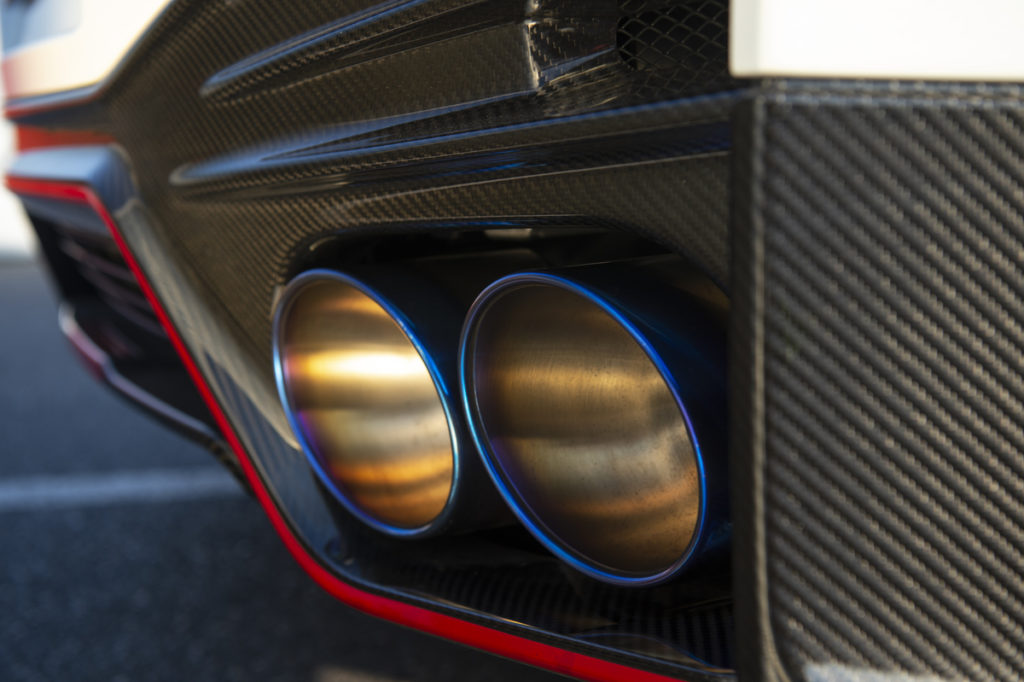
For 2020, the engine is rated at 600 horsepower and 481 lb-ft of torque. The new engine is also utilized for the first time in the 2020 GT-R Track Edition, which previously used the milder-tuned 565-horsepower version. A revised titanium exhaust system has been adapted for 2020 with a more emphatic – yet not intrusive – tone coming through to the cabin.
Handcrafted burnished tips are a signature touch of the lightweight system. The 2020 GT-R NISMO’s revised 6-speed dual-clutch transmission features a refined “Rmode” that now shifts gears more aggressively and intuitively, thanks to a new algorithm for the adaptive shift control (ASC). This selects the best gear for any driving scenario and can especially be felt during braking and approach into a corner, where the driveline feels more precise with faster downshift reactions to help reduce understeer on entry. With engine speed kept at a higher rate (thanks to lower gear engagement), acceleration also improves when powering out of a corner.
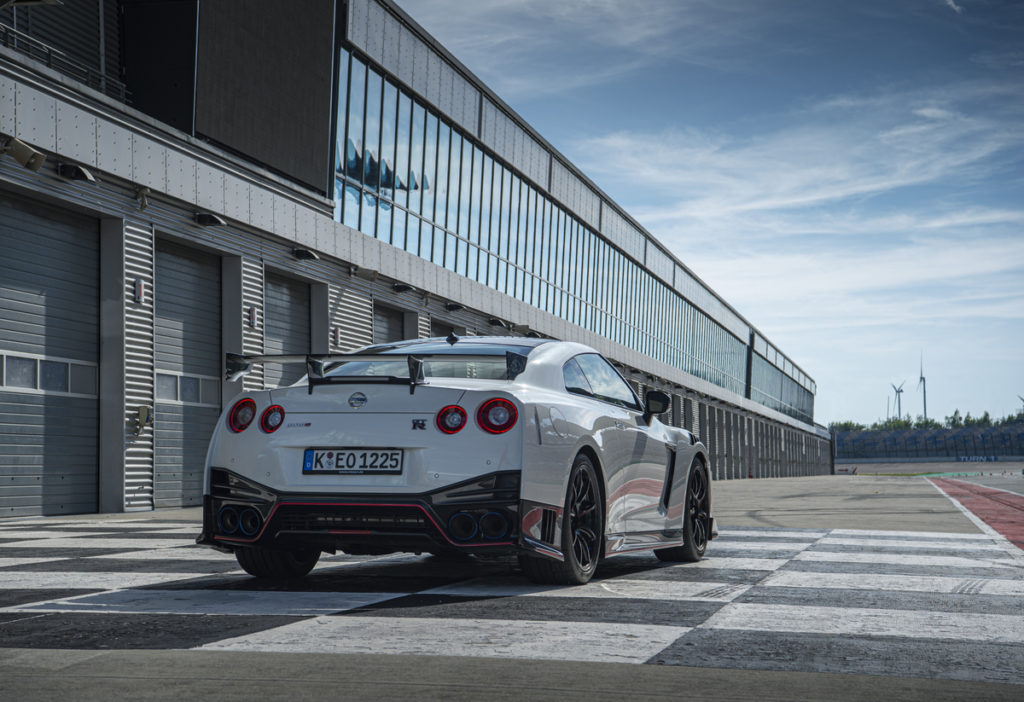
Aerodynamics, design and hefty dose of carbon fiber
With aerodynamic gains in mind, the design of the 2020 GT-R NISMO has undertaken an evolution. The changes are completely functional, increasing cooling of key areas such as the engine bay and brakes, all without negatively affecting the drag coefficient value of 0.26. Further setting the most potent and exclusive of all GT-Rs apart from the rest is the amount of carbon fiber found throughout the car. Most components are lighter compared to the current model. This includes the front and rear bumpers, front fenders (-10 pounds), hood (-4.4pounds), roof (-8.8 pounds), side sill covers, trunk and rear spoiler. Following the theme of kaizen, each component has been improved to cut weight, increase downforce and enhance aerodynamics. Combined, these exterior parts alone have resulted in a total weight saving of23 pounds, joining the nearly 44-pound reduction through upgrades and new components. The most significant piece of carbon fiber application is the roof. New for 2020, the carbon fiber roof removes a substantial amount of weight where it counts most, lowering the car’s center of gravity for improved handling and feel. The roof panel itself is made by using a world-first technique of combining a Prepreg Compression Molding process with a carbon plate and lightweight hard foam sandwich structure. This gives the carbon structure a tighter and lighter 2 weave, improving sound insulation and a striking appearance.
Other changes in the carbon fiber construction are the NACA ducts on the hood, which are now incorporated into the composite structure.The GT3 GT-R racecar heavily inspired the design of the new front fenders. They now sport lovers that increase front downforce by 15 pound-force without creating additional drag. The wind tunnel-tested vented fenders also help smooth airflow along the rest of the body and avoid creating turbulence at the rear wing, promoting even greater high-speed stability. As a multi-functional feature, they also help funnel hot pressurized air out and away from the engine bay.
Color choices for the MY2020 Nissan GT-R NISMO include Solid Red, Jet Black Pearl, SuperSilver QuadCoat and Pearl White Tricoat. All color schemes feature black side mirrors that differentiate the car from other GT-R models.
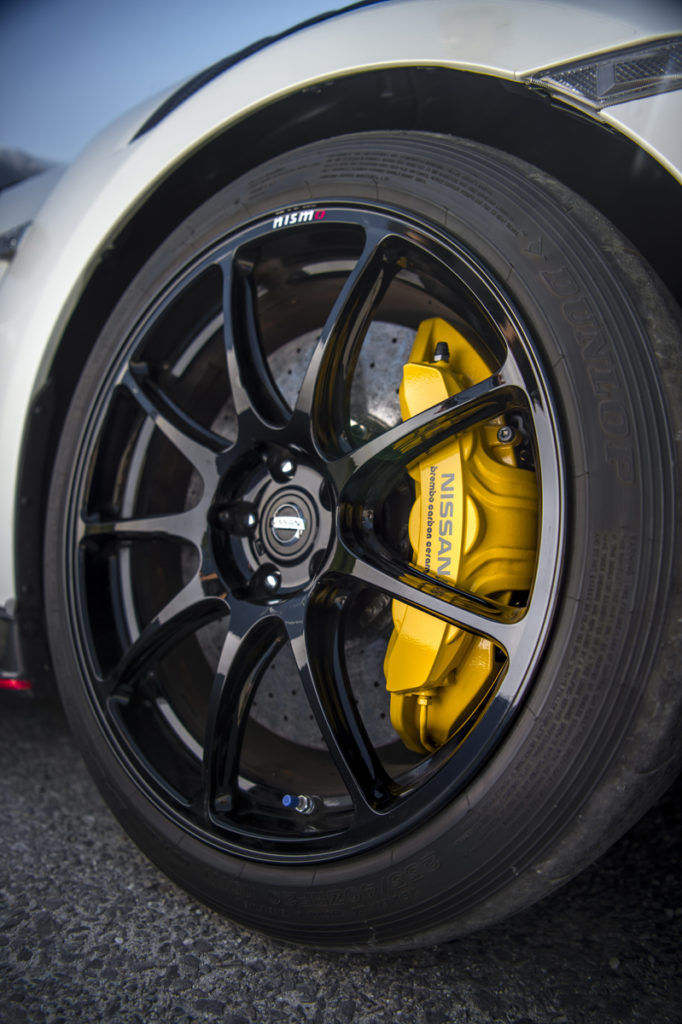
The brakes: Brembo calipers meet carbon-ceramic rotors
Nissan collaborated with Italian brake manufacturer Brembo to create an all-new brake package for the 2020 GT-R NISMO. Special large calipers join carbon-ceramic rotors, the biggest ever fitted to a Japanese performance car at 16.1 inches in the front and 15.3 inches at the rear. The six-piston front and four-piston rear calipers are exceptionally rigid. Their all-new construction brings a significant improvement to brake reaction time. This delivers a more responsive and progressive brake pedal, full of feedback to allow precise modulation of braking force. The result is the ability to shed speed quicker and more effectively while staying resistant to fade. The biggest advantage comes from the carbon and silicon carbide structure of the rotors themselves. They allow for a 36-pound total drop in unsprung weight. Mounted on floating aluminium billet center bells, the new rotor and oversized caliper setup is finished off by new, specially formulated brake pads that generate higher friction levels across the full operational range. The pads also give a firmer, more reassuring pedal feel. Front rotor cooling has also been improved by altering the angle in which the air guides are mounted, helping funnel a higher flow of air toward their centers. As a final touch, the callipers have been dipped in a heat-resistant yellow paint that is not only able to endure temperatures over 1,800 degrees Fahrenheit but is resistant to discolouring from hard use and repeated temperature cycling.
Handling, grip and steering redefined
2020 GT-R NISMO’s suspension tuning improves cornering stability (lateral G), with enhanced yaw-rate response and smoother ride quality. The steering features better linearity and precision than ever, requiring minimal corrections even at speeds reaching 186 mph. The exclusive 20-inch RAYS forged aluminum wheels are a combined 0.22 pounds lighter and incorporate a new nine-spoke design that enhances rigidity despite the weight reduction. A diamond-cut white-and-red NISMO logo on the rim marks their exclusivity. The newly designed Dunlop tires feature a new rubber compound, boosting grip by 7%, and a tread pattern with one fewer groove for the fronts, which increases the contact patch by 11%. The tire’s shoulder shape is slightly rounder so that when the car leans during cornering, more rubber surface makes contact with the ground, generating more grip. Overall, tire cornering force is up by 5%. This also improves the steering response in terms of straight-line tracking and stability compared with the current model, without impacting rolling resistance performance.
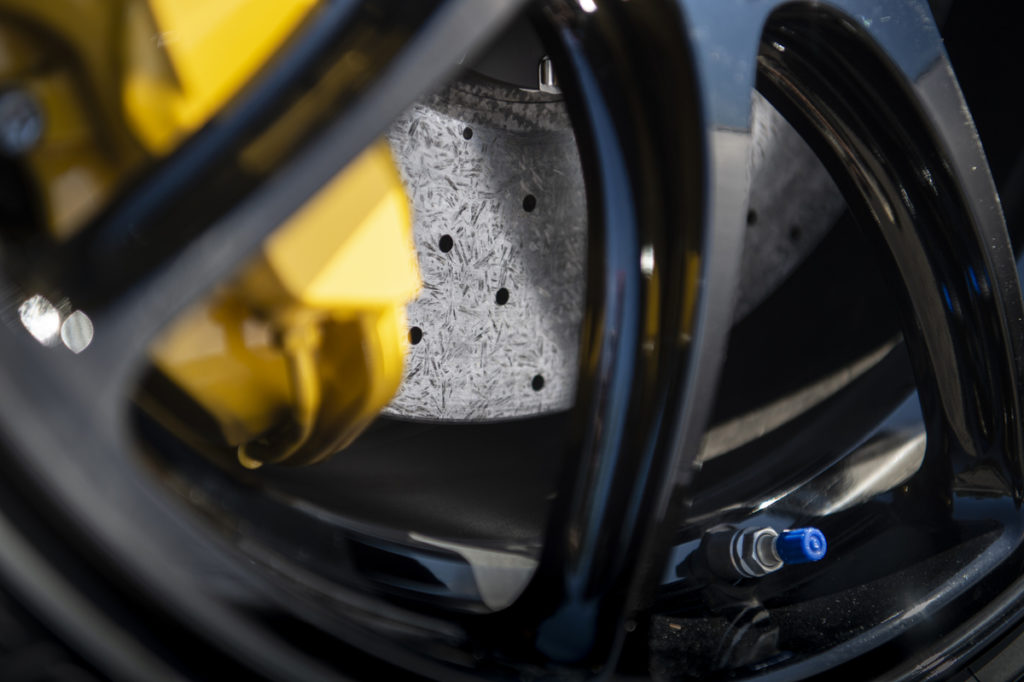
The car’s Bilstein DampTronic shocks were carefully retuned in both rebound (20% softer) and compression (5% softer) to take into account the overall near 66-pound reduction in weight. The revised spring rates contribute to a more linear steering response and increase inroad-holding ability. Further building on the kaizen mentality, more attention to detail continues right down to the chassis and its construction. A special type of bonding between the welds on the chassis and body results in a sturdier-feeling chassis, more composure over imperfections and more precision through all controls when pushing the car hard.
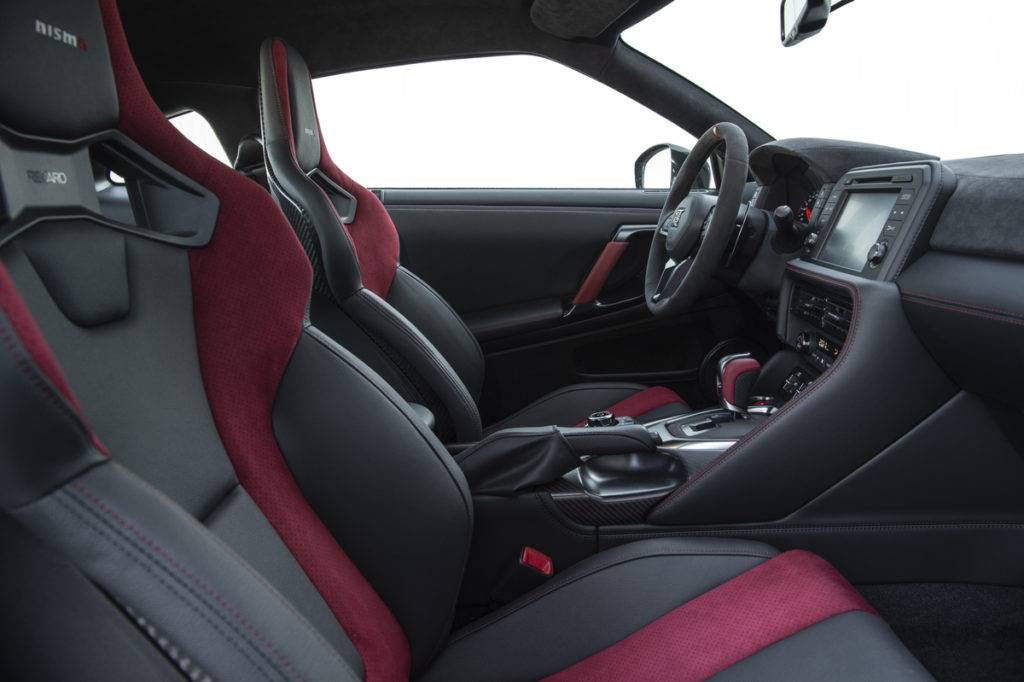
Hip-hugging comfort inside.
Inside the cabin, unique to GT-R NISMO are the leather-appointed Recaro® seats with red synthetic suede inserts. Ergonomically sculpted, heated, reclining RECARO® seats comfortably, yet firmly, support the driver and front-seat passenger. Interior trim features include discreet red stitching on the seats, center console, door trim and steering wheel. NISMO racers influenced the design of the dark gray with red stripe steering wheel, with three spokes, red center mark and red stitching to give a strong combination of grip, feedback and comfort. A large 8-inch touch-panel monitor featuring large icons on the display screen make it simple to use, while a Display Command control on the carbon-fibre center console allows easy operation without having to touch the monitor.
As with all 2020 GT-R models, the GT-R NISMO’s instrument panel is dominated by a videogame-inspired, multi-function display that was created in collaboration with PolyphonyDigital, makers of the Gran Turismo electronic game. Standard features includeNissanConnect® with Navigation and Services featuring Apple CarPlay®, an 8.0-inch colour display with multi-touch control, Nissan Voice Recognition for navigation and audio, HD radio, and a specially designed, 11-speaker Bose® audio system. Only one interior color combination is available, a NISMO-specific black leather with red accents. The seat inserts are Red Synthetic Suede, and there is Dark Gray Alcantara on the steering wheel, instrument panel and headliner.

